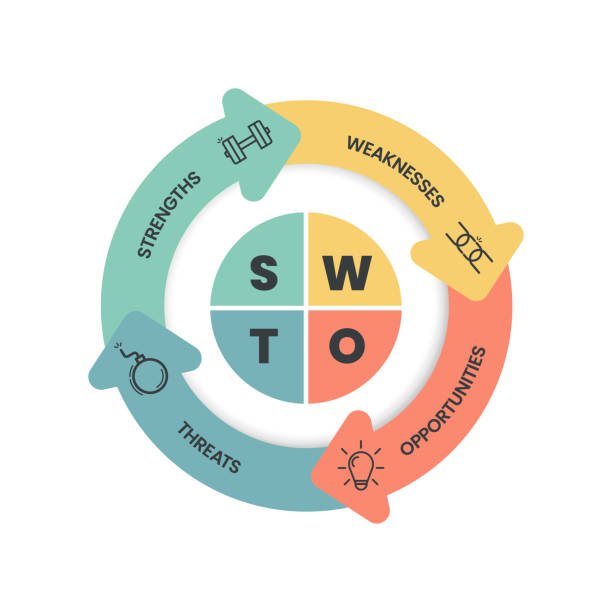SWOT Analysis : Notes, Common Exam Questions and Answers Guide, Online Quizzes and Activities for Business Studies Grade 12 Revision Studies, from Macro Environment: Business Strategies section. This content is under Term 1 as per the CAPS Curriculum.
On this page, grade 12 students learn and study for revision using REAL EXAM questions based on SWOT Analysis topic, using activities and engaging quizzes. Every South African grade 12 learner who wants to pass Business Studies subject with a distinction, needs to go through the valuable study resources on this page.
SWOT Analysis Business Studies Grade 12
What is SWOT Analysis
Definition: SWOT analysis is a tool used by organizations to identify their internal strengths and weaknesses and external opportunities and threats. It is a simple yet effective way to evaluate the organization’s current situation and develop a strategic plan.
The steps involved in a SWOT analysis include:
- Define the objective: Determine what aspect of the organization you want to analyze and the purpose of the analysis.
- Identify strengths: List the internal factors that give the organization an advantage over others. For example, a company may have a strong brand reputation, skilled employees, or a loyal customer base.
- Identify weaknesses: List the internal factors that give the organization a disadvantage compared to others. For example, a company may have outdated technology, a high employee turnover rate, or poor financial performance.
- Identify opportunities: List the external factors that may benefit the organization. For example, a new market opening up, favorable government policies, or emerging technologies.
- Identify threats: List the external factors that may harm the organization. For example, increased competition, changes in customer preferences, or economic downturns.
- Analyze the SWOT: Evaluate the information gathered in the previous steps and identify areas that require further attention.
- Develop a strategic plan: Based on the analysis, develop a plan to address the identified strengths, weaknesses, opportunities, and threats.
Examples of SWOT analysis in business include:
Here are some examples of SWOT analysis in business:
- Example One:
- Strengths: Strong brand recognition, talented employees, efficient production processes.
- Weaknesses: Limited product range, high employee turnover, lack of financial resources.
- Opportunities: Growing market demand, favorable government policies, strategic partnerships.
- Threats: Increased competition, changing consumer trends, economic downturns.
- Example Two:
- Strengths: Innovative products, strong financial position, loyal customer base.
- Weaknesses: Limited market share, lack of diversification, low employee morale.
- Opportunities: Growing demand for eco-friendly products, expanding into new markets, new distribution channels.
- Threats: Intense competition, changing regulatory environment, economic instability.
- Example Three:
- Strengths: Highly skilled workforce, strong intellectual property, efficient supply chain.
- Weaknesses: Limited global presence, high production costs, outdated technology.
- Opportunities: Increasing demand for technology-based solutions, strategic partnerships, expanding into emerging markets.
- Threats: Intense competition from established players, changing government regulations, economic uncertainty.
- Example Four:
- Strengths: Established customer base, diversified product portfolio, strong financial performance.
- Weaknesses: Limited innovation, outdated marketing strategies, low employee engagement.
- Opportunities: Growing demand for online sales, expansion into new geographies, strategic acquisitions.
- Threats: Increasing competition from e-commerce giants, changing consumer preferences, economic slowdown.

